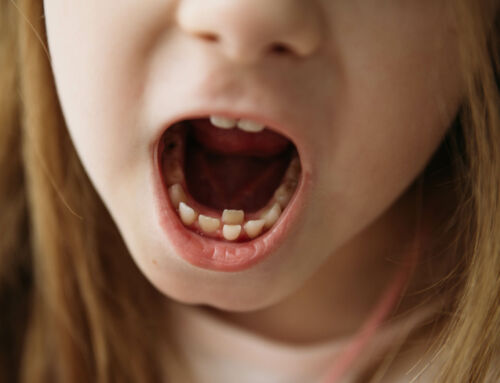As a parent, you want to ensure that your child’s dental and facial development is on the right track. One common concern in growing children is whether their jaw is too small. A small or underdeveloped jaw can lead to crowded teeth, bite issues, and other complications that may require early intervention. Recognizing the signs of a small jaw and understanding when to seek help are key to supporting your child’s healthy growth.
At Ahava Orthodontics in Fort Worth, Dr. Andy and Shawne Barron specialize in identifying and treating jaw development concerns, helping children achieve healthy, balanced smiles. Here’s everything you need to know about spotting a small jaw in your child and how early orthodontic care can make a difference.
Why Does Jaw Size Matter?
The size and shape of a child’s jaw play a critical role in dental and facial development. A properly developed jaw provides enough space for all teeth to align naturally, supports a healthy bite, and contributes to a balanced facial appearance.
When the jaw is too small, there may not be enough room for the teeth to erupt correctly, leading to crowding, overlapping, or crooked teeth. A small jaw can also contribute to bite issues like overbites, underbites, or crossbites. These problems can affect chewing, speaking, and even breathing, particularly if the airway becomes constricted.

Signs Your Child’s Jaw May Be Too Small
Parents often wonder how to tell if their child’s jaw is underdeveloped. While only a qualified orthodontist can provide a definitive diagnosis, there are several signs to look for that may indicate a problem:
1. Crowded or Overlapping Teeth
One of the most obvious signs of a small jaw is crowded teeth. If your child’s teeth are coming in crooked, overlapping, or appearing to have insufficient space, it’s often a sign that the jaw isn’t large enough to accommodate them.
2. Early or Late Loss of Baby Teeth
The timing of baby teeth falling out can affect jaw development. Losing baby teeth too early can cause the surrounding teeth to shift, leading to crowding when permanent teeth come in. On the other hand, delayed loss of baby teeth may indicate that the jaw is not growing as expected.
3. Bite Issues
A small jaw can cause alignment issues between the upper and lower teeth. Signs of bite problems include:
- Overbite: The upper teeth protrude significantly over the lower teeth.
- Underbite: The lower teeth extend beyond the upper teeth.
- Crossbite: The upper teeth bite inside the lower teeth instead of outside.
4. Breathing Issues
A narrow or small jaw can lead to mouth breathing, snoring, or sleep-disordered breathing. These issues often occur because the jaw’s size limits space for the tongue and airway, causing restricted airflow.
5. Speech Problems
Speech difficulties, such as a lisp or trouble pronouncing certain sounds, may indicate that the teeth and jaws are not properly aligned.
6. Facial Appearance
An underdeveloped jaw can affect the shape of the face. For instance, children with a small jaw may have a recessed chin, long face, or noticeable asymmetry.
When to Seek Help
If you notice any of these signs, it’s important to seek an evaluation from a qualified orthodontist. Early detection is key to addressing jaw development issues before they become more severe.
At Ahava Orthodontics in Fort Worth, Dr. Barron specializes in identifying jaw size concerns and creating personalized treatment plans for children. With her expertise and gentle approach, she can guide your child’s jaw development to ensure a healthy, functional, and beautiful smile.
How Dr. Barron Can Help Your Child
Dr. Barron uses state-of-the-art diagnostic tools to assess your child’s jaw size and identify potential issues. If the jaw is too small, she may recommend early orthodontic interventions such as:
- Palate Expanders: These devices gently widen the upper jaw to create more space for teeth and improve bite alignment.
- Myobrace: A preventive treatment that corrects poor oral habits and encourages natural jaw growth and alignment.
- Braces or Aligners: In some cases, traditional braces or clear aligners may be used to address alignment issues as the jaw grows.
Dr. Barron’s goal is to address the root causes of jaw and alignment problems, ensuring long-term benefits for your child’s oral health and overall well-being.
Why Early Intervention Matters
The American Association of Orthodontists recommends that children have their first orthodontic evaluation by age 7. At this age, the jaw is still growing, making it easier to guide its development and correct issues before they worsen. Early intervention can prevent the need for more invasive treatments later and set the stage for a lifetime of healthy smiles.
Schedule a Consultation with Dr. Barron
If you’re concerned about your child’s jaw development, don’t wait to seek expert care. At Ahava Orthodontics, Dr. Barron is dedicated to providing personalized, compassionate treatment for every child. Schedule a consultation today to ensure your child’s jaw and teeth are developing as they should. A healthy, confident smile starts here




